The Economics and Statistics Division maintains archives of previous publications for accountability purposes, but makes no updates to keep these documents current with the latest data revisions from Statistics Canada. As a result, information in older documents may not be accurate. Please exercise caution when referring to older documents. For the latest information and historical data, please contact the individual listed to the right.
<--- Return to Archive
For additional information relating to this article, please contact:
July 28, 2022JOB VACANCIES, MAY 2022 Statistics Canada released today monthly results from the Job Vacancy and Wage Survey (JVWS) for May 2022, the data is not adjusted for seasonal patterns.
Nova Scotia had 24,580 job vacancies in May 2022 with a vacancy rate of 5.2%. This was a new high in the number of vacancies reported in Nova Scotia based on the dataset that started in October of 2020.
Canadian employers were actively recruiting for 1,005,660 positions in May with a vacancy rate of 5.8% (a slight increase after last month's record high vacancies).
The highest vacancy rate was reported in Prince Edward Island while the lowest vacancy rate was reported in Newfoundland and Labrador. Compared to May 2021, the job vacancy rates were higher in May 2022 for all provinces.

Although there are seasonal variations, Nova Scotia's job vacancy rates have been trending up since the start of 2021.
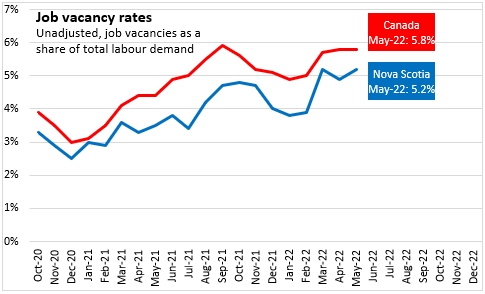
The number of job vacancies in Nova Scotia reached 24,580 in May 2022. In May 2021, there were 14,635 vacancies.
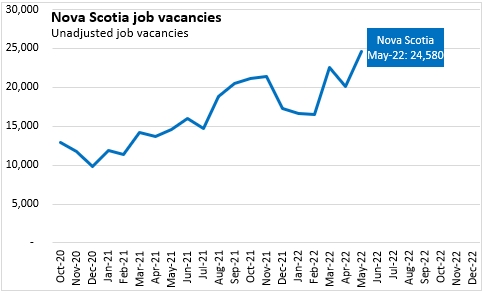
Comparing May 2022 with May 2021, the number of job vacancies in Nova Scotia was up 68.0%. This was the third largest growth among provinces, just behind Prince Edward Island and Saskatchewan. National job vacancy growth was 42.5% with the slowest growth in New Brunswick, and even the slowest growth was 24.5%.
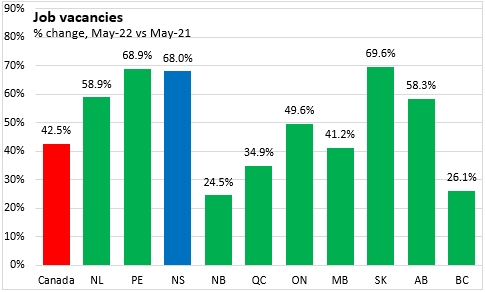
Nationally, accommodation and food services sector had the highest job vacancy rate (11.9%) as well as the highest number of job vacancies at 161,115. This industry has had the highest vacancy rate among all industries for over a year.
After accommodation and food services, the next highest job vacancy rates in Canada were reported in mining/oil/gas as well as personal/repair services. The lowest vacancy rates were in education.
After accommodation and food services, the next largest numbers of job vacancies were reported in health/social assistance, retail, manufacturing and construction.
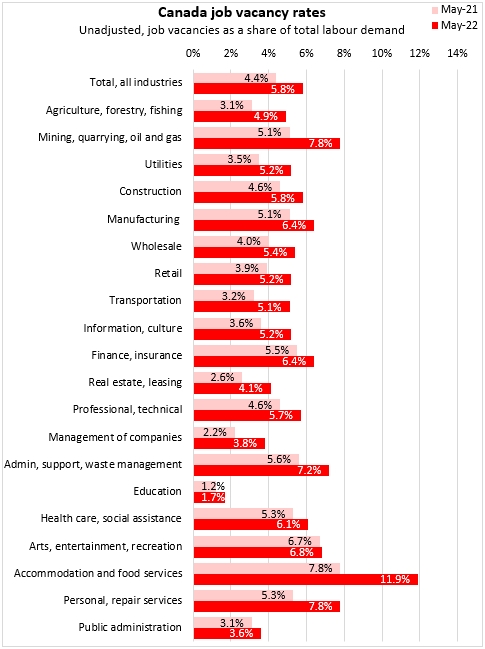
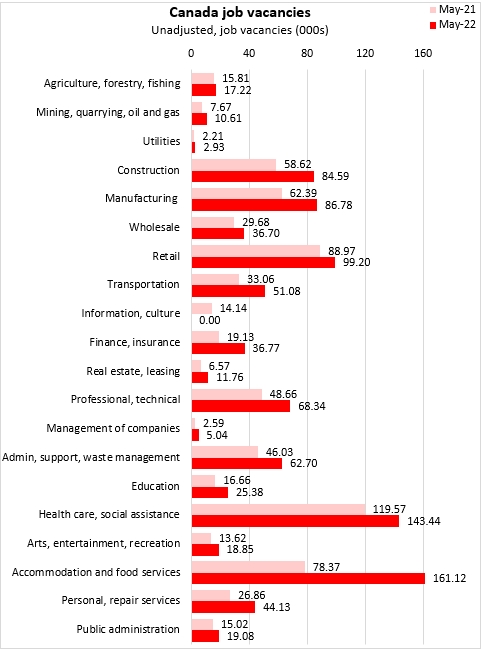
Notes: The job vacancy rate is the percentage of job positions (both filled and vacant) that are vacant. A higher job vacancy rate indicates a tighter labour market where it is more difficult for employers to find suitable candidates for the positions offered. A lower job vacancy rate signals labour market slack and potentially more job seekers competing for each vacant position.
Information on monthly job vacancies will continue in future Statistics Canada releases, and a more detailed analysis will be released with quarterly estimates from the Job Vacancy and Wage Survey.
Sources: Statistics Canada, Table 14-10-0371-01 Job vacancies, payroll employees, and job vacancy rate by provinces and territories, monthly, unadjusted for seasonality; Table 14-10-0372-01 Job vacancies, payroll employees, and job vacancy rate by industry sector, monthly, unadjusted for seasonality
<--- Return to Archive